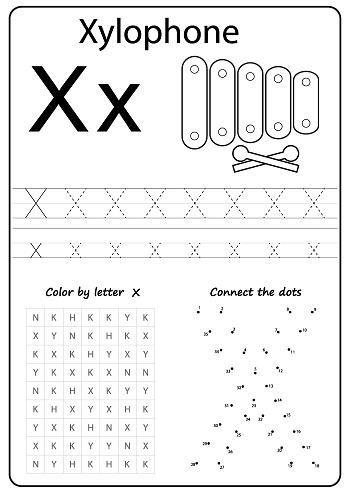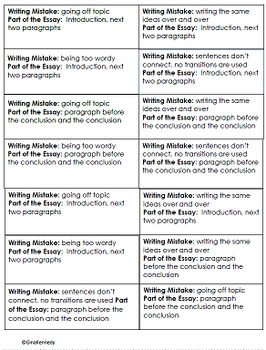A writing system, technically referred to as a script or an orthography, consists of a set of visible marks, forms, or structures called characters or graphs that are related to some structure in the linguistic system. Roughly speaking, if a character represents a meaningful unit, such as a morpheme or a word, the orthography is called a logographic writing system; if it represents a syllable, it is called a syllabic writing system; if a segment of a syllable, it is called a consonantal writing system or an unvocalized syllabary; and if a phoneme, it is called an alphabetic system. (A phonetic alphabet, such as the International Phonetic Alphabet devised by the International Phonetic Association, is one designed to transcribe any oral language into a common script.) Finally, a writing system such as Hangul, based upon the articulatory features that underlie the phoneme (such as voicing and place of articulation), is called a featural writing system. These relations may be depicted as follows:
The Mayan system of writing contains more than 800 characters, including some that are hieroglyphic and other phonetic signs representing syllables. The hieroglyphic signs are pictorial—i.e., they are recognizable pictures of real objects—representing animals, people, and objects of daily life. Descriptive definition, having the quality of describing; characterized by description: a descriptive passage in an essay.
While relatively pure examples of these different types of script are known, most writing systems that have been used for general purposes combine properties of more than one type.

Games For Writing And Representing Integers
Pictorial signs, such as the informational signs at an international airport (insofar as they can properly be called writing), can bear explicit linguistic messages only because of the extremely limited set of alternatives from which a reader must choose. Such writing is of little use for conveying new messages, since there is no convention for decoding them and to that extent it cannot be a general writing system. It can, however, serve a limited set of purposes efficiently.
General writing systems all analyze the linguistic form into constituents of meaning or sound. Chinese script is primarily a logographic script; each word or morpheme is represented by a single graph or character. Two words, even if they sound exactly the same, will be represented by entirely dissimilar characters. But, as the number of distinguishable words in a language can run into the tens of thousands (written English has a recorded vocabulary of more than 500,000 words), the number of logographic characters to be memorized is extremely large.
Syllabaries provide a distinctive symbol for each distinct syllable. A syllable is a unit of speech composed of a vowel sound or a combination of consonant and vowel sounds; the sounds pa, pe, pi, po, pu are different syllables and are easily distinguished in a word. The word paper has two syllables, pa-per. A syllabary such as Linear B, the Mycenaean script dating from about 1400 bce, would have a graph for each of those syllables. Syllables are the most readily distinguishable units of speech; consequently, the earliest of the sound-based, or phonographic, writing systems are syllabic. The number of syllables in a language, while differing considerably from language to language, is always quite large; hence, some hundreds of graphs may be required to make a functioning syllabary. Even then, such writing systems are far from explicit, for any string of syllabic graphs may be read in a number of different ways. The reading of such a script would rely upon the reader’s prior knowledge and ability to work from the context, along with some guesswork.

Consonantal writing systems, as the name implies, represent the consonantal value of a syllable while ignoring the vocalic element. Such a system, therefore, would represent the syllables pa, pe, pi, po, pu with a single character. Such scripts have graphs for consonant sounds but not for vowel sounds, with the result that a certain amount of guesswork is involved in determining which syllable is being represented. This ambiguity, however, should not be overemphasized. When a consonantal system is used to represent a language like English, in which vowels differentiate root morphemes (in English, pat, pet, pit, pot, put are all different morphemes), discarding the vowel results in a highly ambiguous written expression that can be understood only by a reader who already has a good idea of the content of the written message. But in Semitic languages, such as Hebrew and Arabic, the absence of characters representing vowels is much less serious, because in these languages vowel differences generally do not distinguish morphemes. Vowel differences mark inflections, such as tense and aspect, that, while of some importance to the representation of meaning, are both more readily recovered from context and less likely to change the overall meaning. The failure to notice the intimate relation between the morphophonemic structure of the language and the type of orthography has led some scholars to underestimate the efficiency of consonantal writing systems and, perhaps, to overestimate the centrality of the invention of the alphabet to the evolution of Western culture.
Alphabetic writing systems represent the phonological structure of the language. The smallest pronounceable segment of speech is a syllable, but a syllable may be analyzed into the distinctive underlying constituents called phonemes. The syllable pa is produced by passing a column of air through the vocal cords, an action that constitutes the vocalic element, bounded at the outset by sudden release of air through the lips, an action that constitutes the consonantal element. The achievement of the alphabet is to analyze the syllable into its underlying consonant and vowel constituents. The economy of representation comes from the fact that a large number of syllables can be generated from a small set of these constituents. An alphabet consisting of 21 consonants and 5 vowels can generate 105 simple consonant-and-vowel syllables and more than 2,000 consonant-vowel-consonant syllables. In short, an alphabet can represent a full range of phonological differences. It is a script particularly suited to representing a language in which morphological differences are marked in phonological differences; it is less useful for a language like Chinese, in which one syllable represents a large number of morphemes. For the Chinese language a logographic system is more efficient.
Featural writing systems exploit the fact that even phonemes are not the most fundamental units of analysis of speech. Rather, phonemes may be analyzed into sets of distinctive features. The phonemes represented by the letters n and d share the feature of the tongue touching the alveolar ridge above the upper teeth. Featural writing systems analyze the sounds described as consonants and vowels into their shared and distinguishing features. Examples of writing systems that employ a featural approach at least in part are the Korean Hangul script, created, according to tradition, by King Sejong in the 15th century, and Pitman shorthand, a system for rapid writing invented in Britain in the 19th century. In Hangul, vowels are represented by long horizontal or vertical lines distinguished by small marks, while consonants are represented by two-dimensional signs that suggest the articulations involved: pairs of lines representing lips together, tongue touching the roof of the mouth, an open throat, and the like. As the phonological system is organized around some dozen such features, an efficient script can be constructed out of 24 basic graphs. In addition, such a script makes syllables visually discriminable by organizing them into blocks to facilitate rapid reading. Such properties led the British linguist Geoffrey Sampson to say:
Whether or not it is ultimately the best of all conceivable scripts for Korean, Han’gul must unquestionably rank as one of the great intellectual achievements of humankind.
No orthography is a pure system. The clearest example of logographic writing, Chinese, consists not only of characters representing meanings but also of secondary characters based on sound similarity for representing meanings that were difficult to picture. It therefore relies upon both word-based and sound-based principles. On the other hand, alphabets, which are primarily sound-based, also use fixed letter strings to represent the same meaningful unit even if the pronunciation of that unit varies in different contexts. So, for example, the common spelling for the root photo is preserved in the words photograph and photography even though they are pronounced somewhat differently. Conversely, alphabets often provide different graphic representations for homophones (words that sound identical but have different meanings) the more clearly to distinguish their meanings, as in meat, meet, mete; pain, pane; be, bee. The morphemic unit is so fundamental to the reading process that some linguists have concluded that, for an orthography to be practical and efficient, it is more important to provide an invariant visual form for each meaningful unit than for each sound unit.
Games For Writing And Representing Two
The shaping of a writing system to make it suitable for a wide range of cultural purposes required other developments besides the invention of a system of characters for representing linguistic form. To facilitate fast and accurate recognition, the form of writing was improved by introducing spaces between the words, developing conventions for punctuation and paragraphing, and simplifying graphic forms. This evolution continued through the invention of printing and the invention of type fonts (seehistory of typography). And to exploit the aesthetic properties of the writing system, artistic forms of writing were developed (seecalligraphy).

adjective
Games For Writing And Representing Fractions
noun
QUIZZES
LEARN THE SPANISH WORDS FOR THESE COMMON ANIMALS!
Games For Writing And Representing Letters
Origin ofBoolean


Words nearby Boolean
Example sentences from the Web for Boolean
I thought you were kidding me, like that Boolean Algebra stuff.
No stronger proof of this can be given than the Boolean logic embedded in computer hardware and programming languages.
